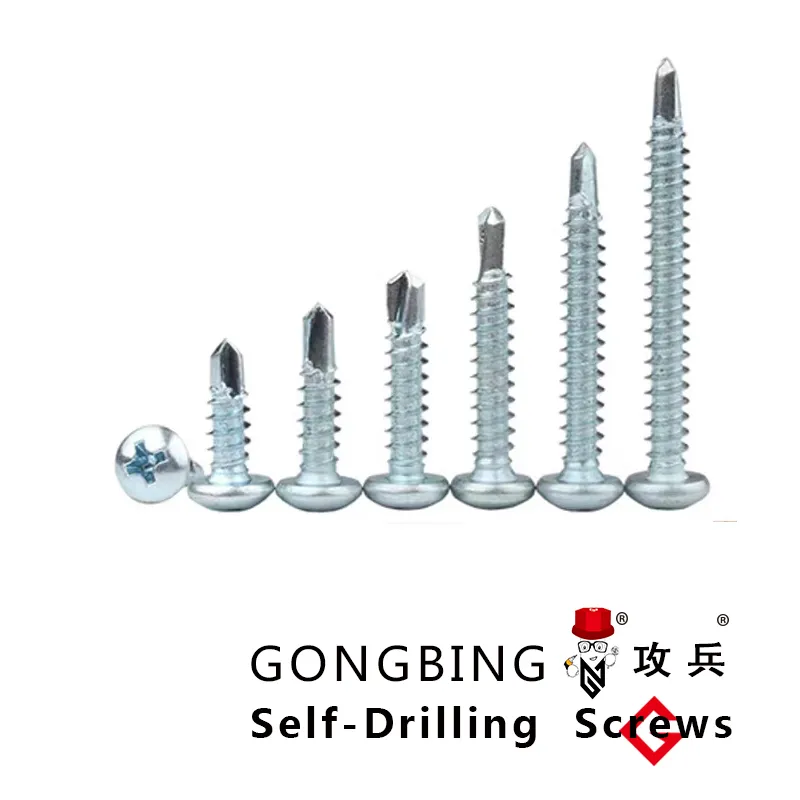Self-Tapping Screws with Countersunk Heads for Efficient Fastening Solutions
Understanding Countersunk Head Self-Tapping Screws A Comprehensive Guide
When it comes to fastening materials together, screws are a fundamental component in various industries, including construction, automotive, and furniture manufacturing. Among the many types of screws available, countersunk head self-tapping screws have gained particular popularity due to their unique design and functionality. In this article, we will explore what makes these screws distinct, their applications, advantages, and tips for using them effectively.
What is a Countersunk Head Self-Tapping Screw?
A countersunk head self-tapping screw is a type of screw designed to create its own hole in the material it is being driven into, eliminating the need for pre-drilling. The countersunk head features a conical shape that allows the screw to sit flush with the surface of the material, providing a clean and finished appearance. This design not only enhances aesthetics but also reduces the risk of snagging, making it ideal for applications where a smooth surface is essential.
Design and Features
Countersunk head self-tapping screws come in various materials such as stainless steel, carbon steel, and brass, making them suitable for different environmental conditions. The head can be found in different configurations, including Phillips, flat, and star, allowing for versatility in driving tools. The thread design is equally important; some screws feature coarse threads for faster driving and better holding in softer materials, while others have fine threads for greater hold in harder materials.
Applications
These screws have a wide range of applications across various sectors. In construction, they are commonly used to fasten drywall to wooden or metal studs, ensuring a secure fit that maintains a level surface. In the furniture industry, countersunk screws are ideal for assembling components without visible fasteners, enhancing the product's visual appeal. Moreover, they are increasingly being used in the automotive sector for fastening body panels and components, where both strength and aesthetics are critical.
Advantages
The primary advantage of using countersunk head self-tapping screws is the time and labor saved during installation. As they do not require pre-drilling, they streamline the construction process, which can significantly reduce labor costs. Additionally, the flush finish provided by the countersunk head minimizes the risk of injury and damage in high-traffic areas. The self-tapping feature ensures a secure hold in various materials, from wood to sheet metal, offering flexibility in usage across different projects.
countersunk head self tapping screw

Tips for Use
To achieve the best results with countersunk head self-tapping screws, consider the following tips
1. Material Compatibility Ensure that the screw material is compatible with the materials you are fastening. Stainless steel screws are ideal for outdoor applications due to their corrosion resistance.
2. Correct Size Choose the appropriate screw size and length for your specific application. The screw should be long enough to ensure a strong hold without protruding through the other side of the material.
3. Pilot Holes While self-tapping screws are designed to create their own holes, in some dense materials, it can be beneficial to make a small pilot hole to prevent splitting or damage.
4. Proper Torque Use a torque wrench to avoid over-tightening, which could strip the screw or damage the material.
5. Surface Preparation Ensure that surfaces are clean and free from dust and debris before installation to achieve optimal hold and alignment.
Conclusion
Countersunk head self-tapping screws are an indispensable tool for various industries, offering efficiency, aesthetics, and reliability. By understanding their features, applications, and best practices, manufacturers and craftsmen alike can enhance their work quality and achieve professional results. Whether you're working on a construction site or in a workshop, integrating these screws into your toolkit will undoubtedly be a step toward improved craftsmanship and efficiency.
-
Weatherproof Plastic Expansion Anchors for OutdoorNewsJun.06,2025
-
Sustainability in the Supply Chain: Eco-Friendly TEK Screws ProductionNewsJun.06,2025
-
Load-Bearing Capacity of External Insulation FixingsNewsJun.06,2025
-
Double Head Bolts: Enhancing Efficiency in Industrial MachineryNewsJun.06,2025
-
Corrosion Resistance in Chipboard Screws: Coatings for Wholesale DurabilityNewsJun.06,2025
-
Butterfly Toggle Bolts : Enhancing Structural ResilienceNewsJun.06,2025
